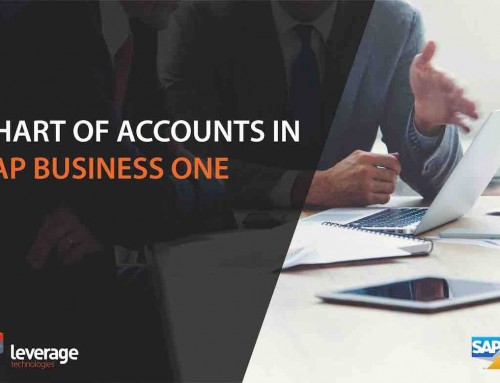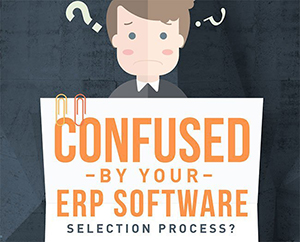What’s the ideal software stack for multi-entity organisations?
In a volatile global market, large multinational organisations need to centralise and integrate core functions at both the enterprise and divisional level. Discover how SAP helps organisations manage their multi-company environments seamlessly.
If you control the operations of multiple business entities, achieving a high-level view of your entire enterprise can be difficult. Effectively controlling and streamlining your operations across all of those entities can be even harder.
Multinationals, conglomerates, groups of companies and franchisors are often complex organisations. A mix of subsidiaries enables you to grow your business, enter new markets or create new integrations within key verticals or horizontals. But it also makes oversight of teams, data, finances, and cash flow more complicated.
Complication causes confusion and slows down your time to market.
Australian economics experts predicting what 2019 has in store for global business warned that political and trading changes on the horizon, such as Brexit, could slow global growth and shift global production supply chains.
If you’re responsible for the operational management of multiple companies, potentially across multiple countries or exporting globally, it’s clear that future-proofing your enterprise will rely on greater consolidation of effort and costs.
Running a group of companies isn’t easy
In early 2018, Bloomberg Businessweek cast doubt on the manageability of expansive mega-conglomerates like General Electric and pointed to a number of high profile cases of conglomerates being sold, broken up or scaled-down.
Bloomberg quotes Paul Elie, chief of U.S. industrial deals for consultant PwC: “We’re seeing management teams really evaluate what their core strengths are and where they think they can really generate a return on their capital,” he says. “It’s very difficult to do that across a vast portfolio of businesses.”
And in Australia, the challenges of running a network of businesses was highlighted this year during a parliamentary inquiry into the practices of franchisors. Several large franchisor parent companies were accused of poor practices that saw franchisees’ businesses destroyed.
But where does the problem, and the opportunity, actually lie? It’s in the ability to manage a group of companies well, which often comes down to individual leaders and the processes and technologies they employ to gain clarity and coordinate efforts across disparate ventures.
That’s why running an agile, efficient group of companies is made easier through integration.
Integrate with a multi-tier software strategy
Greater alignment between all of your divisions is a strategic move, and it starts with an Enterprise Resource Planning (ERP) solution. For conglomerates, a world-class choice is SAP.
SAP’s ERP applications allow you to create a unified ecosystem of information-sharing, with software designed for enterprise-level and subsidiary-level operations—that integrate seamlessly and provide the right level of detail and functionality for different parts of your network.
Powered by SAP HANA, you can access real-time analytics tools ensures you can access critical data from every subsidiary to see your financial position more clearly.
Deploying SAP enterprise-level ERP and SAP Business One for subsidiaries or local branches establishes a flexible, multi-tier software approach that you can refine and customise as your group of companies continues to expand. For example, if you acquire a business in a totally new industry—SAP offers more than 500 add-on solutions to help you address different business challenges.
Time for CFOs to step up
Who is best placed to initiate the adoption of technology that promotes cohesion? Finance managers and CFOs have an incredibly important role to play in setting the strategic direction for parent companies that operate multiple subsidiaries.
Integrating and streamlining operations within midsize and large group companies often centres around the demands of being able to clearly manage your money—accounting and financials, and the associated views of customers and sales.
Former Deloitte Southeast Asia CEO, and current Singapore Accountancy Commission chair, Chaly Mah, believes the future of accountancy is in emerging technologies including data analytics, blockchain, cloud computing, robotics process automation and artificial intelligence.
Mah told CPA’s intheblack.com that being able to use analytics to dissect the customer and help the management team make better and more timely business decisions will enable finance leaders to become valued business advisors, “…and helps me as a finance professional know where my problems are.”
Advance your tech to simplify business
For multi-entity organisations, it can be hard to gauge the financial health of individual companies, cash flow and reporting at the group level. These financial management issues are essential to address, and technology can help.
But as CFO Magazine highlighted recently, unwise investment in digital transformation projects is a significant financial risk for companies. Cutting-edge technologies must have a practical business use to be worthwhile.
This is doubly important when you’re considering technology investments that will shape business systems across a group or network of businesses.
You don’t just need advanced technology, you need truly co-ordinated tools that contribute to your success in tangible ways. SAP has helped conglomerates across the world to become better functioning digital businesses.
Your business landscape may be complicated, but implementing a sophisticated ERP environment through SAP is a reliable way to bring everything together.
Explore the potential of SAP today by speaking with our expert consultants. We have significant experience in SAP multi-company deployments.







Leave A Comment